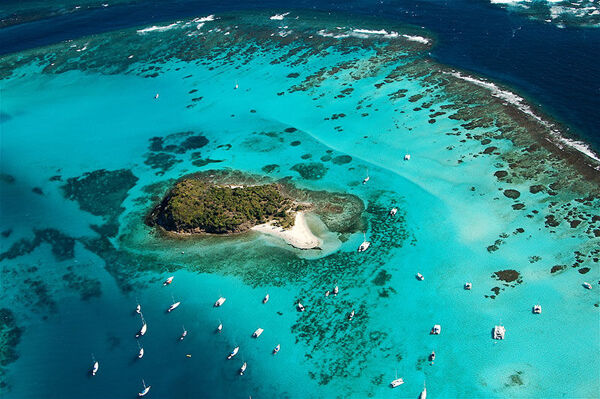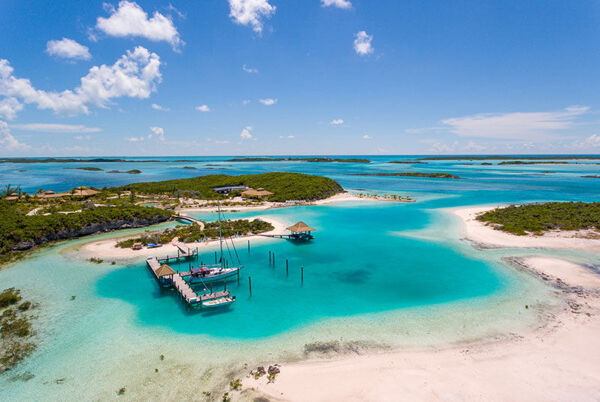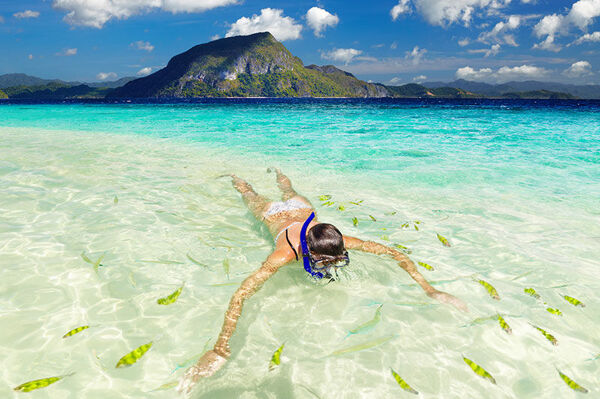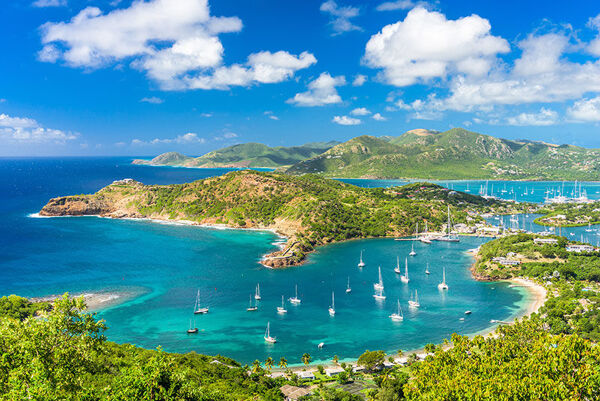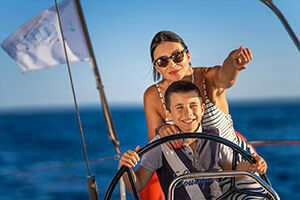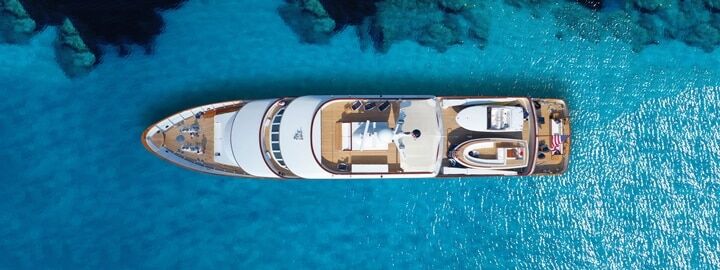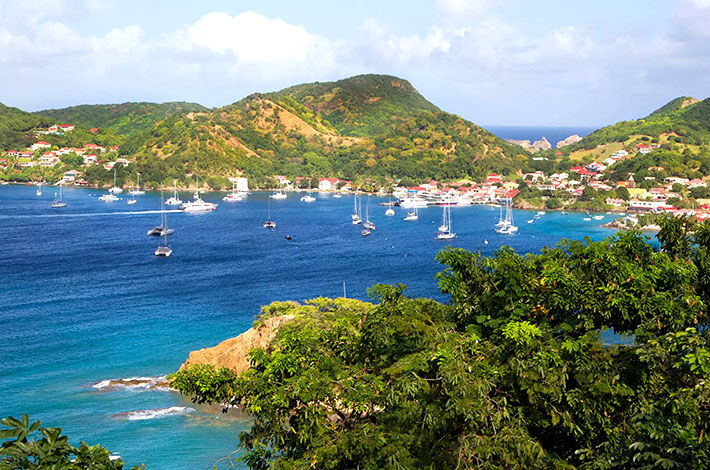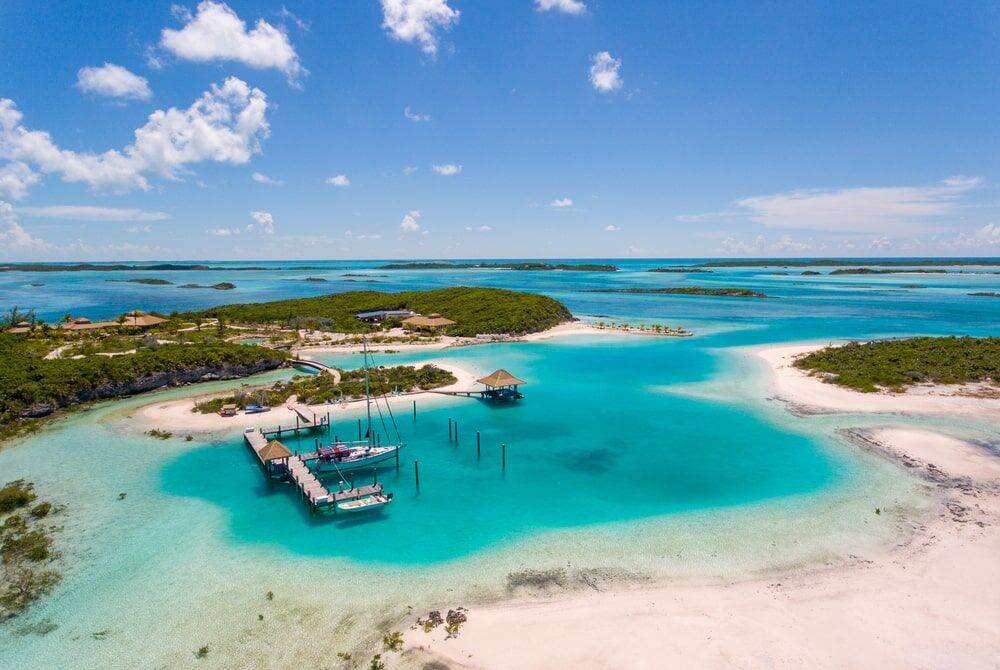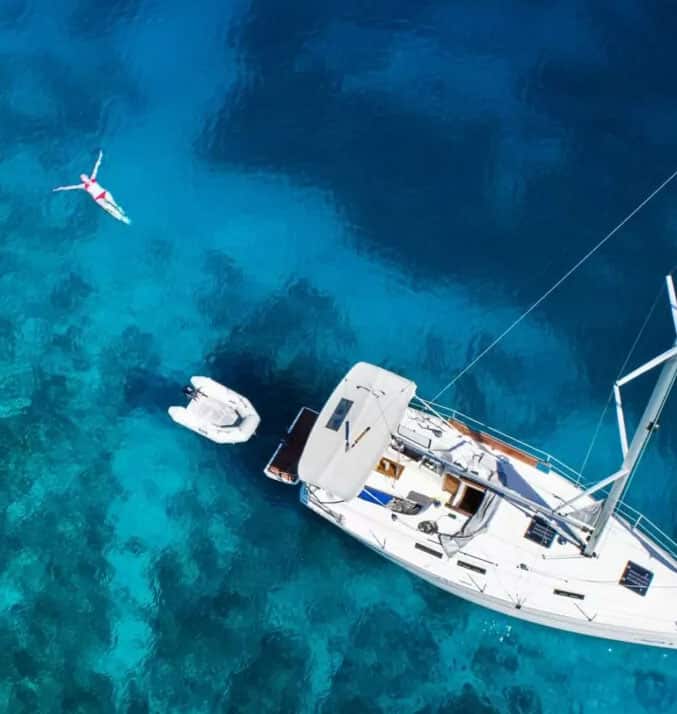

Sailing Holidays in Caribbean
A nautical dream come true!
BLACK SAILING WEEK
Up to 35% discounts and extra 5% on all bookings made until December 2nd, 2024
What makes Caribbean so attractive for sailing?
The Caribbean is a group of islands which is located on the Caribbean Sea to the East of North America, simply known to as “paradise on earth!”
Whether you’re planning a family vacation with the whole crew, a romantic getaway for two, searching for calm, preserved waters and short island hops or exhilarating blue water passages, the Caribbean is one of the most exciting sailing vacations you could ever experience.
Currency: East Caribbean Dollar, United States Dollar, Euro
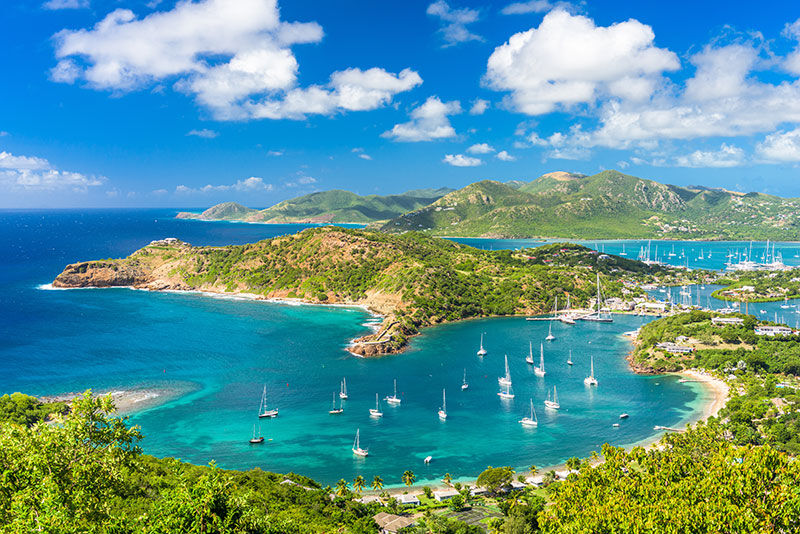
Sailing season and climate
The climate in the Caribbean is tropical which means that the weather is hot and sunny all year long. Although most of the islands start their rainy season from May to October, the official hurricane season in the Caribbean begins from 1st of June until the 30th of November.
Caribbean yacht charter options
Pick a route for your perfect sailing holiday
Top Caribbean Sailing Destinations
Cuba
Cuba is located in the Northern Caribbean where the Caribbean Sea, the Gulf of Mexico and the Atlantic Ocean meet. Major cities include Havana which is the country’s capital capital and the largest city while other major cities include Santiago de Cuba and Camagüey. It is popular with sailors for its favourably warm climate, steady winds, natural beauty, and unbiased welcoming people.
– Official language: Spanish.
– Currency: Peso (CUP).
– Local climate: tropical, moderated by Northeasterly trade winds that blow all year long.
– Cuban culture: influenced by its melting pot of cultures, primarily those of Spain and Africa. In addition, most charter fleets are situated in Cienfuegos.
– Marina facilities: water, electricity, restaurant, bar, mini-market and washing facilities.
BVI (United Kingdom)
The British Virgin Islands consist of the main islands of Tortola, Virgin Gorda, Anegada, and Jost Van Dyke, along with over 50 other smaller islands and cays. You would definitely fancy a BVI sailing trip as it is known to be one of the top sailing destinations in the world. With near-constant gentle trade winds, easy line-of-sight navigation and short leg voyages between the islands, it is a favourite for novice and seasoned sailors alike.
– Capital: Road Town
– Currency: the US Dollar (USD)
– Official language: is English
The British Virgin Islands have a tropical rainforest climate which is moderated by trade winds. The sailing route can begin in Saint Thomas, which then takes you to St. John, Tortola, the Bight, the Indians, Cooper Islands, Salt Island, Trellis Bay, The Baths, Gorda Sound, The Dogs, Great Harbor, Green Turtle Cay and finally Cane Garden Bay. On your way, you should definitely stop to explore the wildlife, the caves and go snorkelling.
Saint Martin
Saint Martin is an island in the Northeast Caribbean Sea, approximately 300 km East of Puerto Rico. The 87-square-kilometre island is divided roughly 60/40 between the French Republic and the Kingdom of the Netherlands. Sailing from St. Martin allows you to explore some of the marvellous islands in the Eastern Caribbean, including mainland St. Martin, Anguilla and St. Barts. As for the divers and the snorkelers, they can enjoy some of the most spectacular unspoiled reefs in the world.
Currency: Euro
Capital: Marigot
Antigua and Barbuda
Antigua and Barbuda is a country in the West Indies in the Americas, lying between the Caribbean Sea and the Atlantic Ocean. It consists of two major islands, Antigua and Barbuda, and a number of smaller islands. There is said to be 365 distinct beaches on Antigua, perfect to visit one for every day of the year. This region is one of the world’s most desirable sailing destinations along with its complex coastline, an abundance of safe harbours and a nearly unbroken protective coral reef.
The capital: St. John’s on Antigua
The official language: English
Currency: East Caribbean Dollar (XCD)
The islands generally experience low humidity and recurrent droughts. The average temperature is 27 °C and the coolest period is between December and February. The sailing route can consist of a one week sailing trip around the island of Antigua which means starting in the capital of St. Johns and sailing away to Jolly Harbour, Carlisle Bay, English Harbour, Green Island and Dickenson Bay.
Saint Lucia
Saint Lucia is a sovereign island country in the West Indies in the Eastern Caribbean Sea on the boundary with the Atlantic Ocean. This part of the world offers some of the most vibrant and colourful snorkelling in the Caribbean and where you can relish a warm welcoming and sensational French Creole culture.
The official language: English
Currency: East Caribbean dollar (XCD)
Capital: Castries
The volcanic island of Saint Lucia is more mountainous than most Caribbean islands, with the highest point being Mount Gimie. The local climate is tropical, moderated by northeast trade winds, with a dry season from 1st of December till the 31st of May, and a wet season from 1st of June till the 30th of November. While sailing in St. Lucia, you will see why the island is famous and filled with sailors, as it is a fantastic mid-point to explore the Grenadines and the astonishing Caribbean islands.
Explore St. Lucia’s Rodney Bay in the North, where you can discover the Pigeon Island National Park, or visit Vieux Fort Wetlands in the South. If you enjoy hiking, the Gros Piton Nature Trail between the Piton’s volcanic peaks is a must see as it has one of the most impressive views in the Caribbean.
Martinique
Martinique is one of the eighteen regions of France (being an overseas region) and an integral part of the French Republic. In Martinique, you could take joy in swimming and snorkelling among coral reefs or stay at the lovely fishing villages, hot springs, lush rainforests and rugged peaks.
Official language: French
Currency: Euro
Capital: Fort-de-France
The capital celebrates every aspect of the French culture with style and panache from their excellent cuisine to the chic sophistication of fine resorts and hotels. While sailing in Martinique, just like sailing in Antigua, your route consists of sailing around the island and most of the charter fleets are situated in Le Marin.
Saint Vincent and the Grenadines
Saint Vincent and the Grenadines is a country in the Lesser Antilles Island Arc, in the Southern portion of the Windward Islands. In fact, out of their 32 enchanting islands, only 9 of which are inhabited, including Mustique, Bequia and Union. St. Vincent, while the largest island is your gateway to the Grenadines with us! This is a magical destination where the only limit is your time and how much you can pack into your itinerary. You may even wish to consider a 14-day stay to explore this wonderful cruising ground.
The official language: English
The capital: Kingstown
Currency: East Caribbean Dollar (XCD)
On your sailing trip, you could consider visiting St. Vincent, Mustique, Canouan, Mayreau, Tobago Cays, Union Island, Clifton Harbour and Chatham Bay.
Sint Maarten
Sint Maarten is the southern Dutch part of Saint Martin island and is one of four constituent countries that form the Kingdom of the Netherlands. It is commonly believed that Christopher Columbus named the island in honor of Saint Martin of Tours when he encountered it on his second voyage of discovery.
Sint Maarten is 34 km2. The terrain is generally hilly, with the highest peak being Mount Flagstaff at 383m. The area to the west around the airport is flatter and contains the Dutch section of the Simpson Bay Lagoon. The Great Salt Pond lies to the north of Philipsburg. Several small islands lie off the coast (Cow and Calf, Hen and Chicks, Molly Bay, Pelikan Key, Guana Key of Pelican). It is home to many distinctive plants: hibiscus, yellow sage, mahogany, and cacti.
In March there is an annual regatta being held. It lasts three days and is culminating in the first weekend in March. There is also the annual St. Maarten Carnival which starts in April and ends in May.
The island is famous for its Maho Beach which is right next to a runway at Princess Juliana International Airport. Landing aircraft pass within 35 meters from the beach.
Nightlife full of festivities, beautiful beaches, traditional and delicious cuisine, and grandiose casinos make Sint Maarten a great place to spend your sailing holidays.
Currency: Netherlands Antillean Guilder
Capital: Philipsburg
The Bahamas
Bahamian coast is very long, compared to the total area of the country. This is due to a large number of islands, islets, atolls and cays. In large numbers, the islands are rounded, with a large number of coves and a very sandy bottom, ideal for sea fun – swimming, diving and underwater safari. Sailing in the Bahamas is popular because of the aforementioned relief features.
One of the features of the Bahamian coast is coral reefs from which the atolls develop, shallow islands rounded up in the lagoons. There is growing awareness about the conservation of beautiful coral reefs, which are more and more damaged due to climate changes and pollution of the oceans.
As the Bahamas are surrounded by the ocean, there are few places where there are no coral reefs on all sides of the island. The shores of some islands in the Bahamas are a bit steep, with much deeper ocean depths.
Currency: Bahamian dollar (BSD)
Language: English
Coastline: 3542 km
Number of islands: over 700, including cays (small sandy islands)
Picking a boat type
Picking out the type of boat to go with will generally come down to your budget, the group size, and preferred method of sailing. Moreover, different sailboats available can be chartered independently or with a fully-staffed crew.




Starting from 160 EUR per day

Starting from 500 EUR per day




